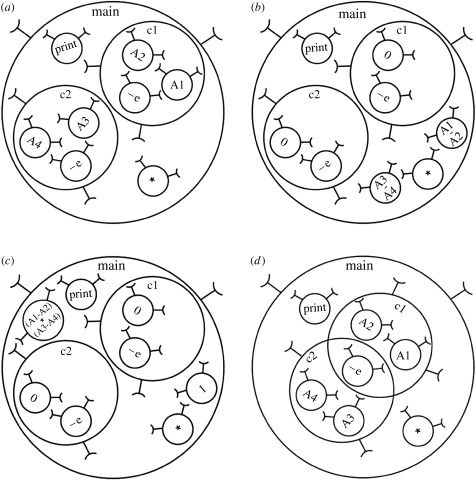Figure 7.
SC calculation of PRINT((A1-A2)*(A3-A4)). As with all SC calculations, interactions occur randomly and asynchronously where permitted by scopes and contexts. The example also demonstrates that SC makes no difference between function and value: the data making up a system may behave as either depending on whether they are interacting or behaving as a context for an interaction. In this figure, the transformation functions of context systems and the results of the transformed systems are written within each system. (a) The initial systems prior to calculation. (b) Systems transformed by subtract–escape function ‘−e’ that subtracts and ejects the result system one level outward, leaving behind the remnant system with a value of zero (executed fragments shown in bold): PRINT((A1-A2)*(A3-A4)). (c) Systems transformed by multiply function producing a system containing the result of the calculation and a remnant containing the value of one, prior to activation of PRINT function which prints the result of the calculation: PRINT((A1-A2)*(A3-A4)). (d) The same calculation can be performed in different ways, for example, a more compact, functionally equivalent arrangement of systems, sharing the subtract–escape function.

